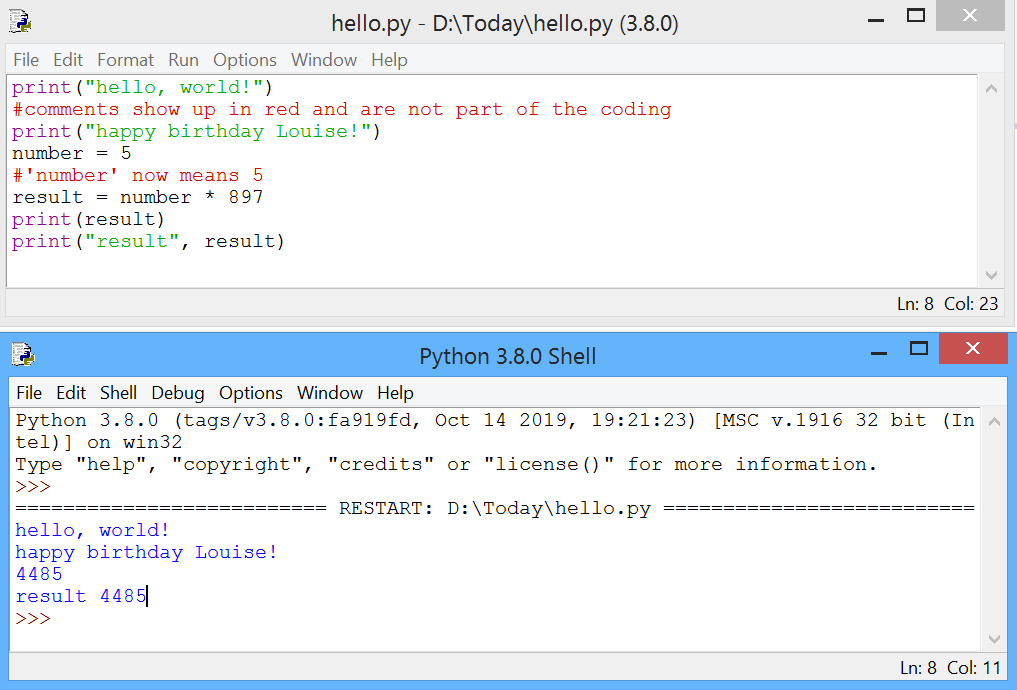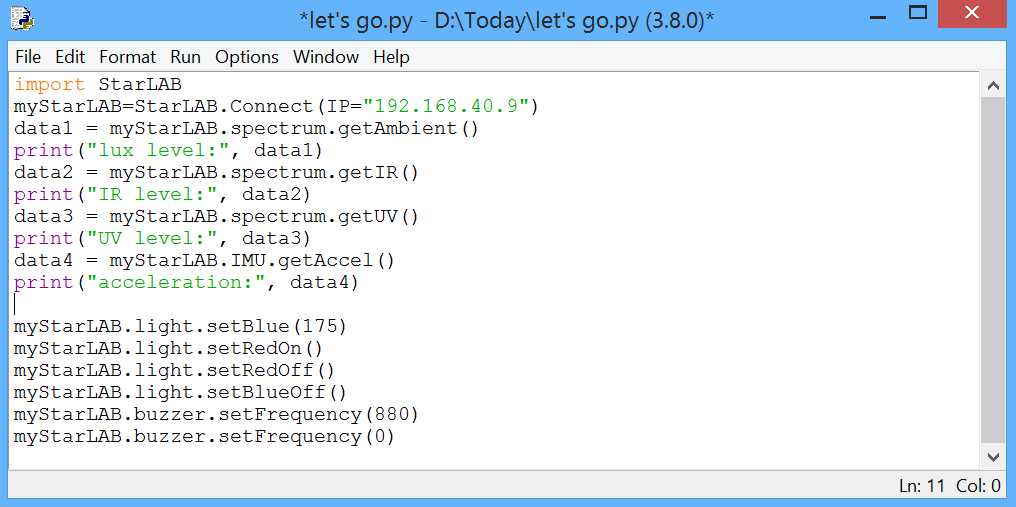Recently, I attended a three hour workshop at Newcastle Library, learning how to operate a StarLAB Mars Rover (Rover). The workshop was run by Lewis Quill, the Director of Obelisk Systems, and considering I didn’t even know what a Rover was, I learned a lot!

Newcastle Libraries has two Rovers, which use coding in the Python programming language to control them. The bodies are predominately 3D printed – all the purple parts can be printed and replaced if broken. Up to 30 computers can connect to one Rover, using the same WiFi band, and programmers can connect to multiple Rovers at the same time. The last computer to connect to the Rover will have overriding control.
The Rovers have a range of sensors on board, that allow them to collect environmental and navigational data, such as:
- spectrum sensors i.e. light:
- red, green, blue (measured in lux)
- ambient (lux)
- infra-red (lux)
- ultraviolet (microwatts per centimetre squared or μW/cm2)
- movement sensors:
- acceleration (metres per second squared or m/s2
- gyroscope that measures angular velocity (degrees per second or °/s)
- magnetoscope that measures magnetic field (milliGauss or mG)
- orientation (degrees or °)
- atmospheric sensors:
- humidity (percentage or %)
- air pressure (hectopascals or hPa)
- altitude (metres or m)
- temperature (degrees Celsius or °C)
- distance sensor or range (centimetres or cm) from 0cm to 255cm (11111111 in binary)
Rovers also have a camera and programmable buttons, headlights, coloured light emitting diodes (LEDs), a buzzer, and an organic light-emitting diode (OELD) display screen.
There are also tools for Rover diagnostics, including:
- the temperature of the circuit board in °C
- battery level in volts or V
- motor current draw in milliamperes or mA
- power used by the Rover in milliwatts or mW
There are two motors (left and right) which can be programmed as a percentage of full power, and the Rover can be programmed to turn by a set angle (such as 90°).
What I learned
After establishing that the group had a very diverse range of coding experience (from none to quite extensive), Lewis gave us a crash course in coding with programming language Python. Having previously run some Scratch Code Club workshops at the library and created websites using HTML, I found Python quite easy to understand, especially with the handy Python Cheat Sheet provided. According to Obelisk Systems (2019b), the Rovers can also be programmed using Scratch, which would be easier for upper primary school children.


Once we had some rudimentary Python coding skills, we imported the StarLAB coding library, and started interacting with the Rovers. The following code produced the four results as numbers (e.g. “lux level: 26”) , flashed the blue and red LEDs on and off, and briefly sounded the buzzer. We ran this program several times while modifying the light levels to the Rover (by moving it around the room, and covering and uncovering the sensor), to illustrate the responsiveness of the Rover’s sensors.

Lewis explained programming with ‘if statements’, and then we were free to play with the coding, with Lewis available to answer questions and help us solve problems. My group decided to try coding part of “Do-Re-Mi”, which introduced the concept of ‘notes’ and ‘time.sleep’. It also became obvious how important it was to set the buzzer back to zero at the end!

After some playing, it was time to move! Below is an example of coding that allowed the Rover to report back how close it was to the wall, and when it was 20cm away, it turned the motors’ power off (very important for not crashing into walls).

Relevance to my work
Not immediately relevant to my work with younger children, I learned that Rovers are used as an integral part of the iSTEM syllubus for Years 9 and 10 in over 300 schools across New South Wales (Regional Development Australia Hunter (RDA Hunter), n.d.-a). A sample scope and sequence can be seen here. In 2019, over 300 students from 22 schools in three Australian states competed in the StarLAB Mars Rover Challenge, with two of the schools competing remotely (Obelisk Systems, 2019c).
More relevant to my work, RDA Hunter also has a miniME program for students in Years 5 and 6, including a Hackathon where they learn to use Scratch to program the Rover (RDA Hunter, 2018, n.d.-b). In 2019, nearly 150 Year 5 and 6 students from 14 schools participated (RDA Hunter, 2019).
Having two Rovers available for use in the library can support student learning and experience with these technologies outside of school hours, and give students the opportunity to teach others (including staff). The library could host small scale Hackathons during school holidays, engaging the tweens and teens, two age groups currently not well catered for by library programming.
Knowledge gaps
There is a lot more I could learn about operating Rovers and using them in the field. I would love to attend a more in-depth training course with Lewis, as well as talking to teachers who use them in class. Robotics is not a field I know much about, and there are articles I could read about robotics in libraries, both as programming tools and as functional tools.
References
Obelisk Systems. (2019a). Order. Retrieved from https://www.obelisksystems.com/order
Obelisk Systems. (2019b). StarLAB coding platform. Retrieved from https://www.obelisksystems.com/starlab-platform
Obelisk Systems. (2019c). StarLAB Mars Rover Challenge 2019. Retrieved from https://mailchi.mp/18bb9c9d56a9/starlab-mars-rover-challenge-2019?fbclid=IwAR17YeKw9aOkxBju2a6mi_kRgFw5B-9aMHw5m5_O0b706FwkJXuTP0Fx-Tc
Regional Development Australia Hunter. (2018, Septemeber 10). miniME Hackathon. Retrieved from https://rdahunter.org.au/news-events/minime-hackathon/
Regional Development Australia Hunter. (2019). miniME phase two kicks off. Retrieved from https://www.rdahunterstem.org.au/minime/minime-phase-two-kicks-off/
Regional Development Australia Hunter. (n.d.-a). iSTEM. Retrieved from http://www.meprogram.com.au/istem/
Hi Joanne,
The article was quite interesting, but I must admit that I am an old dinosaur and I don’t know anything about robotics. What your report makes me reflect on is the benefits of robotics as a pedagogical tool and how every day it is becoming more relevant through recreational activities. Through this, children are developing different capacities that will be very useful in the future. Children and young people around these ages have been familiar with the electronic world since childhood. One of the main benefits I have noticed is by using robotics, children not only learn electronic, mechanical, and computer programming notions, but they do it while having fun. Robotics can make children encourage their creativity since they start from an idea and develop it until the end. It can also promote scientific and logical thinking to develop projects.
Using robotics in the library can have excellent benefits, such as allowing librarians to devote themselves to more productive tasks, freeing up work time, advising people on how to find things. Finally, robots can become an attractive element, a hooking element that attracts the attention of children and adults, so it is not uncommon for libraries to allow users to browse the work that robots do.
“The Little Robot that Lived at the Library – How we built an emotional, social robot to guide library customers to books” a fascinating article that I recommend reading since it informs us how a robot (Oodi) can help customers find the books and book categories they want. https://towardsdatascience.com/the-little-robot-that-lived-at-the-library-90431f34ae2c (Axelsson, 2019).
Reference
Axelsson, M. (2019, July 25). The Little Robot that Lived at the Library. Retrieved from Medium: https://towardsdatascience.com/the-little-robot-that-lived-at-the-library-90431f34ae2c
Dear Joanne,
Are you still using your Mars Rovers. if so I really need a refresher course. Are you available. ?